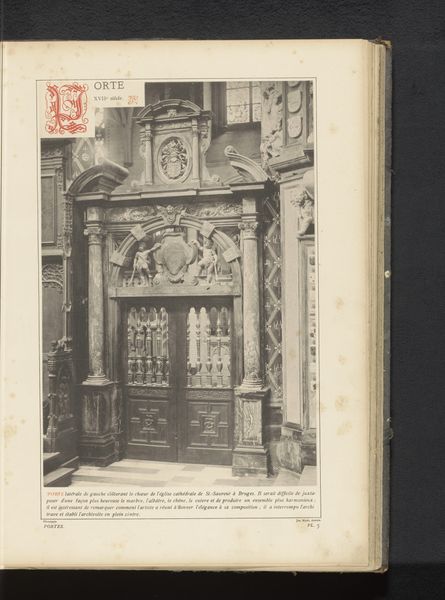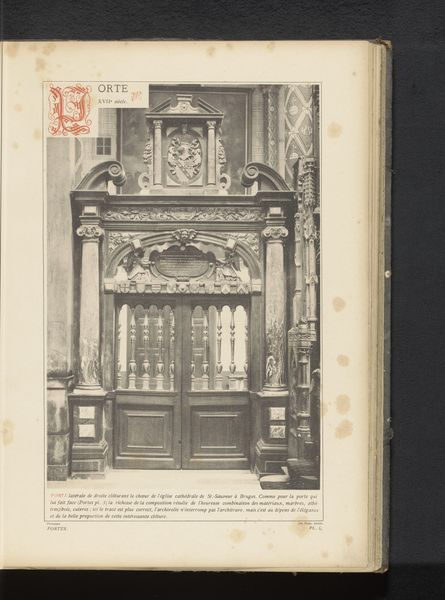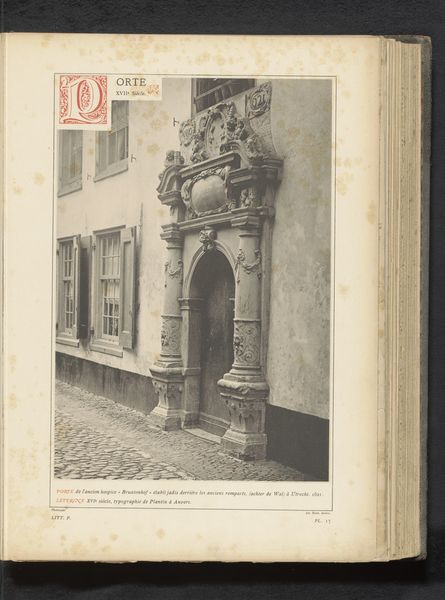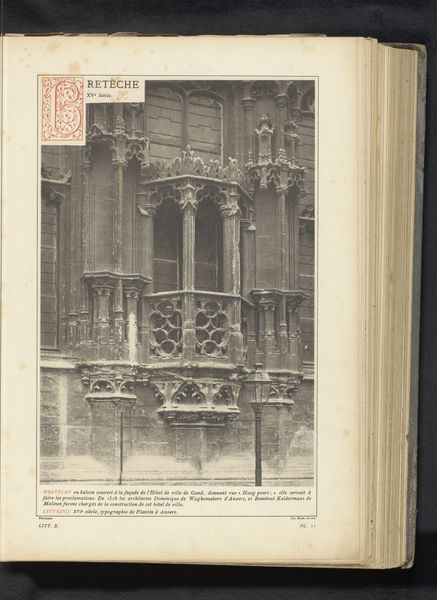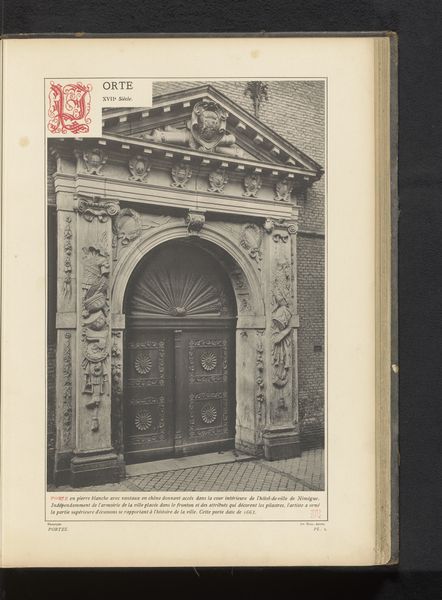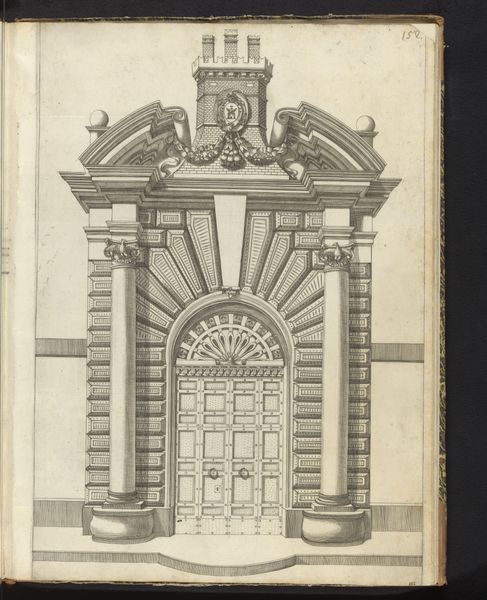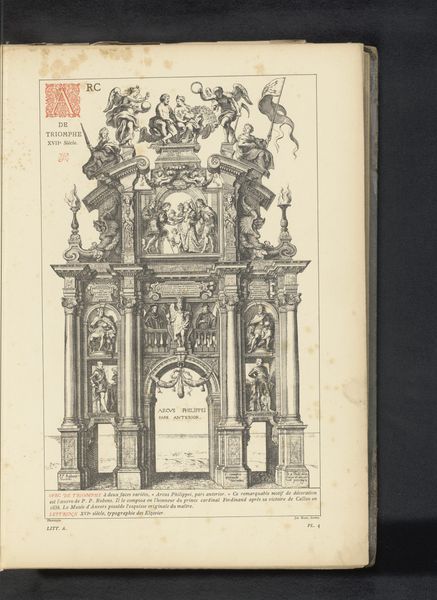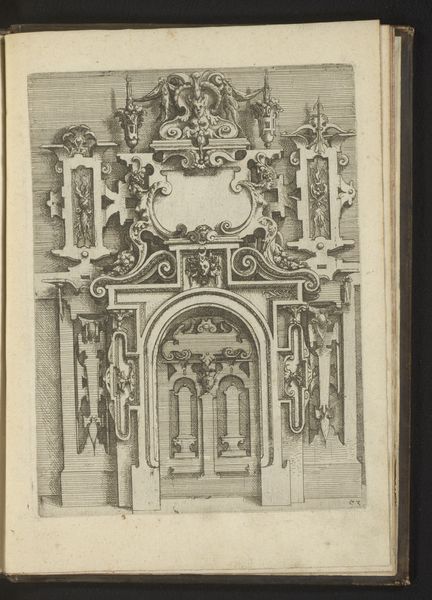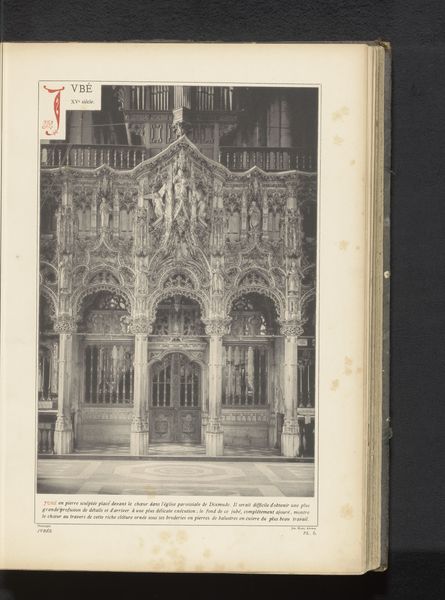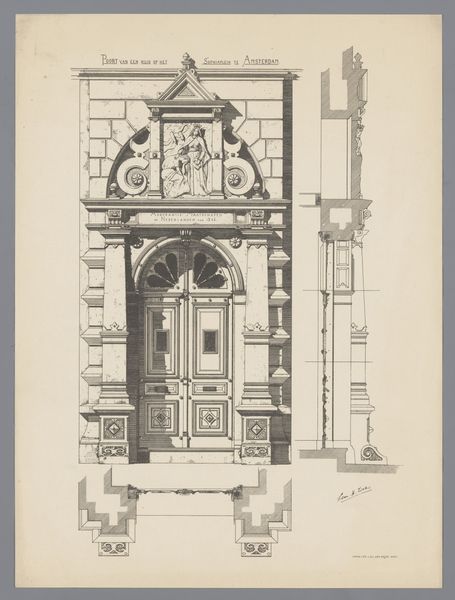
print, etching, photography, architecture
# print
#
etching
#
photography
#
cityscape
#
architecture
#
realism
Dimensions: height 336 mm, width 229 mm
Copyright: Rijks Museum: Open Domain
Curator: Editor: So, this is a print titled "Deur van de Oude Beurs te Lille," before 1881. It seems to be an etching, and the image presents an architectural view of a doorway. I'm struck by how the details in the stone are rendered. How would you approach analyzing this work? Curator: Considering a materialist approach, let’s think about this etching not just as a depiction, but as an object produced within a specific social and economic context. What can the printmaking process itself, and the choice of subject matter, tell us about that context? What’s communicated through the materiality? Editor: Well, the print medium suggests reproduction and distribution. This image, rather than being a unique artwork, was intended to be seen by many, hinting at a desire to share this architecture widely. Perhaps this suggests that the architectural image itself and how it was produced became symbolic objects? Curator: Exactly! The architecture in the image – the Oude Beurs – would have been built by skilled labor from materials sourced and transported within a very specific economy and governance. The act of etching it, reproducing it, disseminates these ideas, values, or claims about power relations inherent in the building itself. Is the "hand made" aspect of etching and its relation to architectural representation notable here, for example? Editor: Definitely. Etching, even when used to depict something like architecture with its rigid forms, still shows a trace of the artist's hand, right? Is there an argument here, considering its photographic qualities, that art mediates mechanical representation with human representation of materiality? How does the labor of the architect that conceived the building compare with that of the person reproducing the image? Curator: Precisely. By focusing on these material aspects – the labor of production, the means of reproduction, and the intended audience – we can see beyond a simple cityscape. We get a glimpse into the economic and social forces at play. Editor: It’s like each stage of production adds another layer of meaning, shaping our understanding of the building and its place in society. I hadn't thought about prints having the capacity to contain all this economic material information! Curator: It really makes you see art as more than just the finished product, but also all that it entails.
Comments
No comments
Be the first to comment and join the conversation on the ultimate creative platform.
